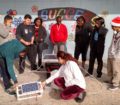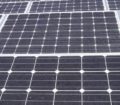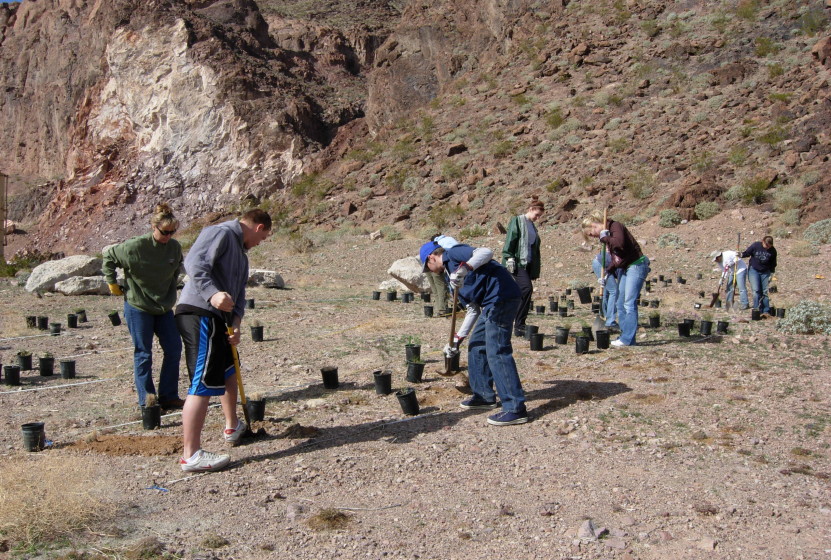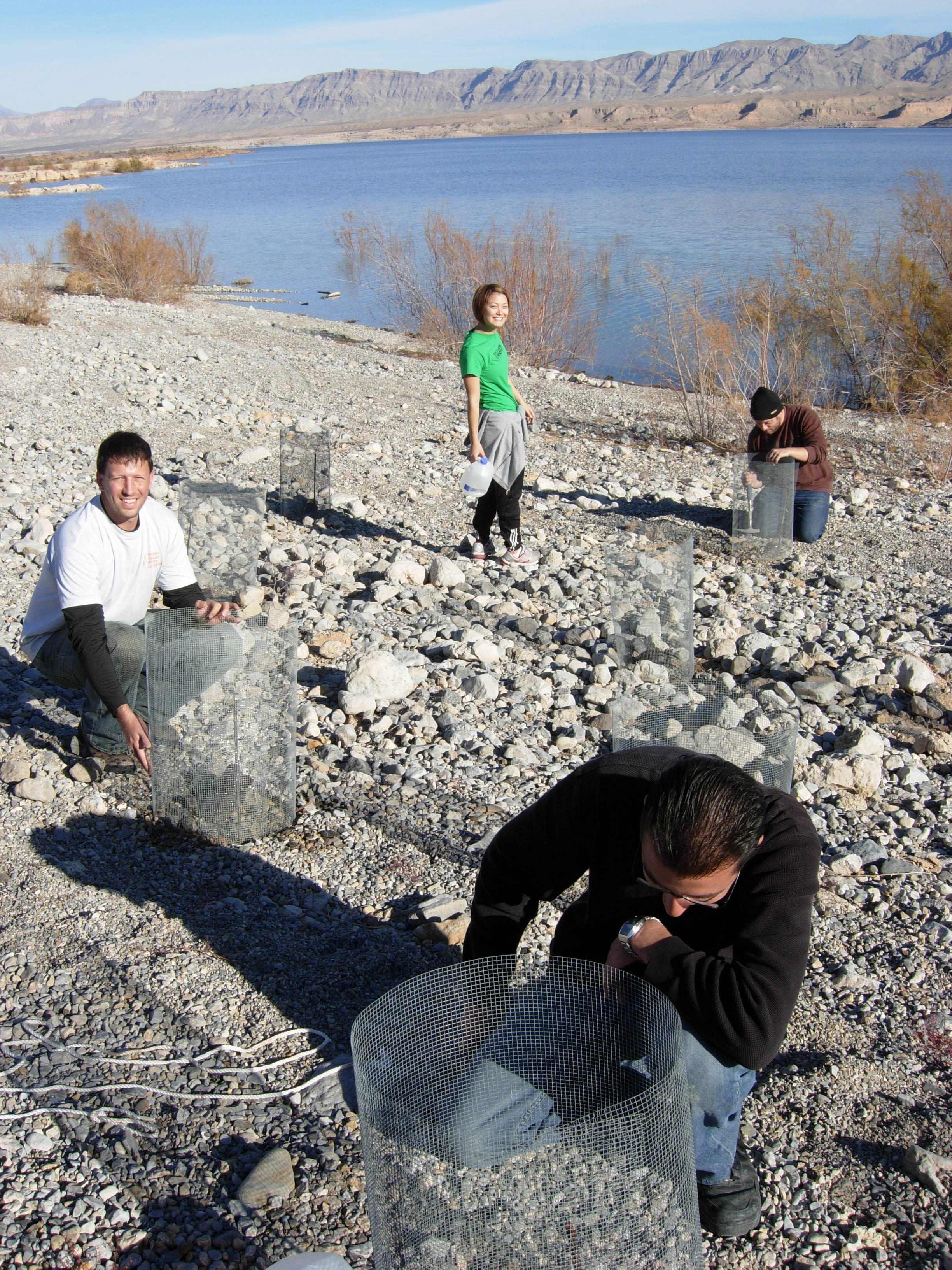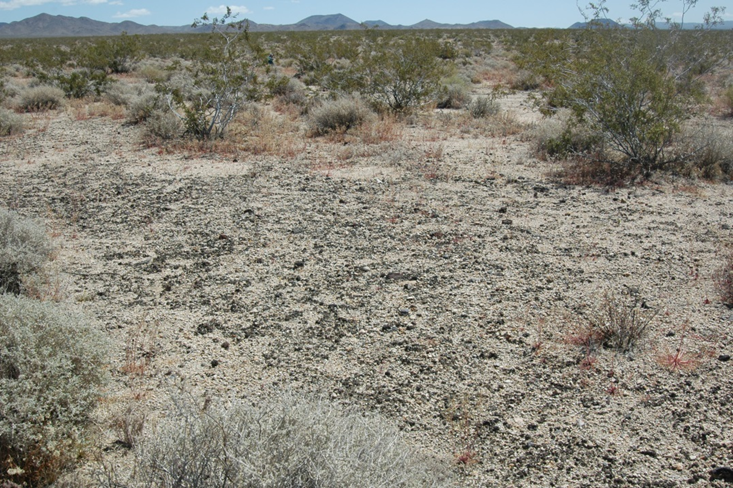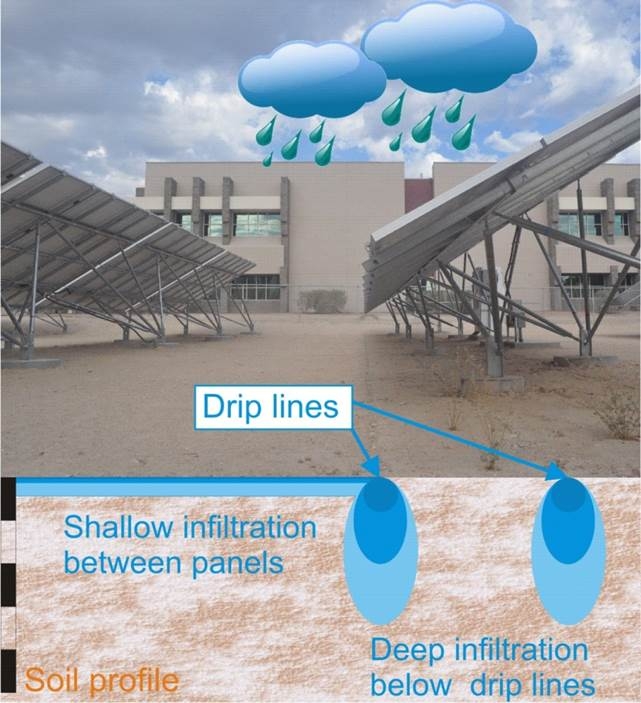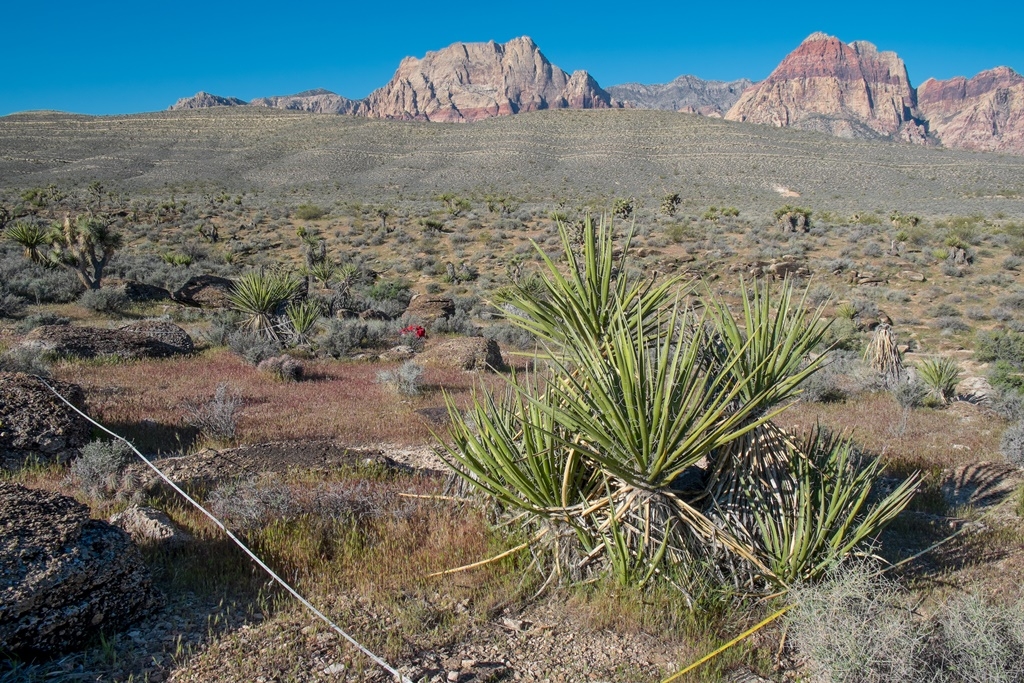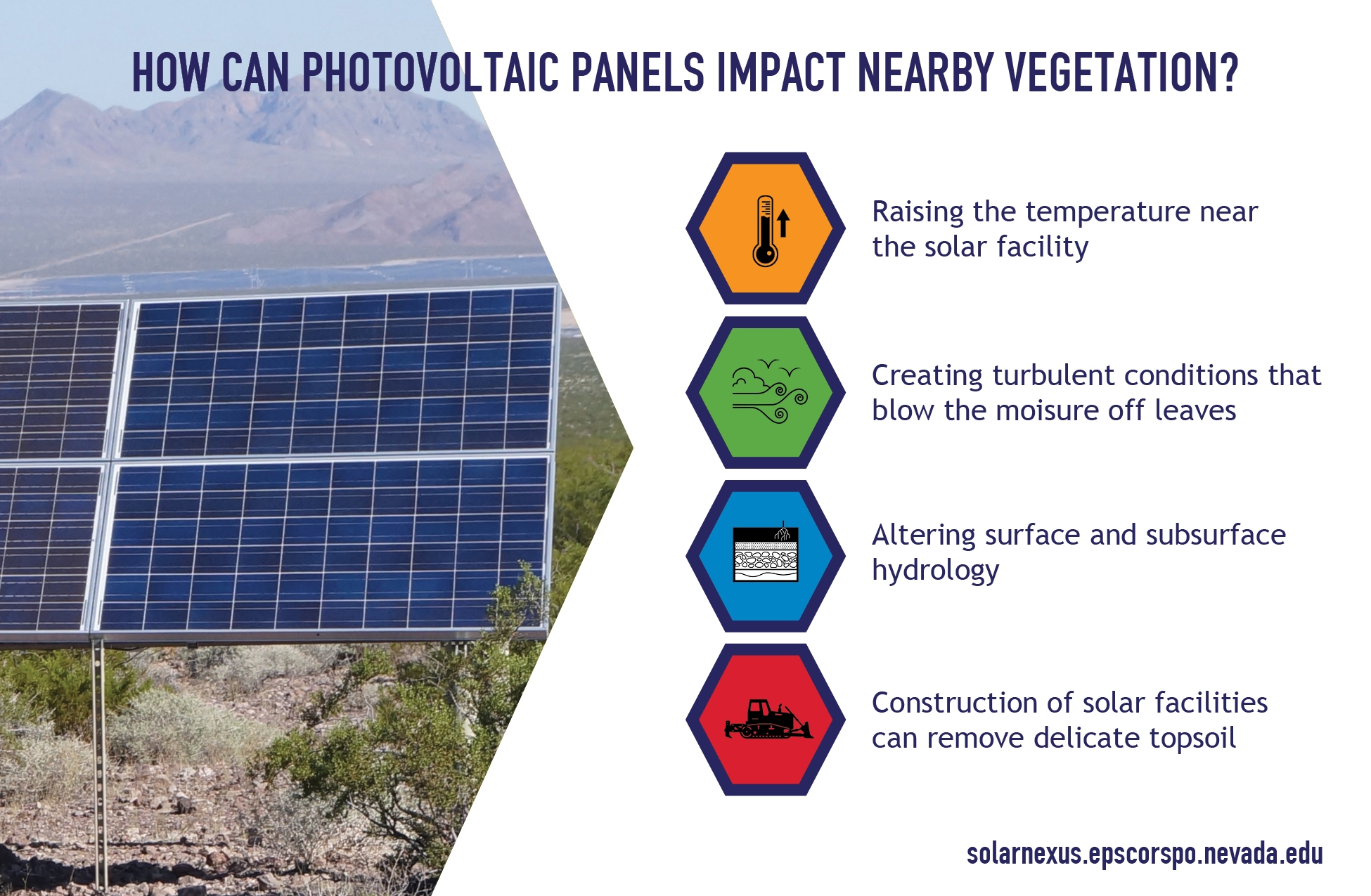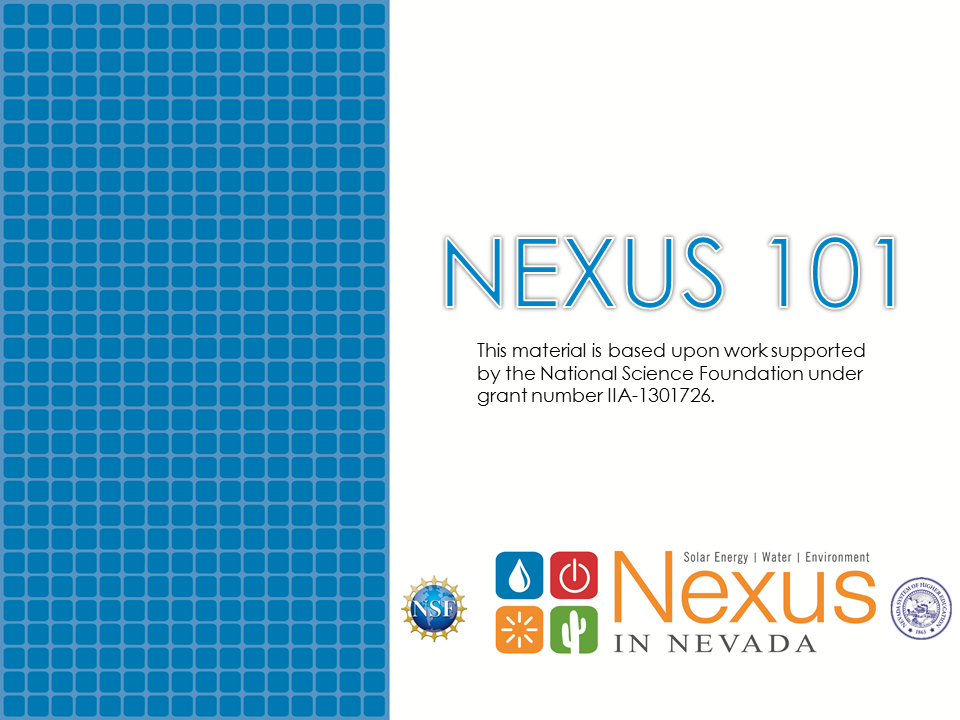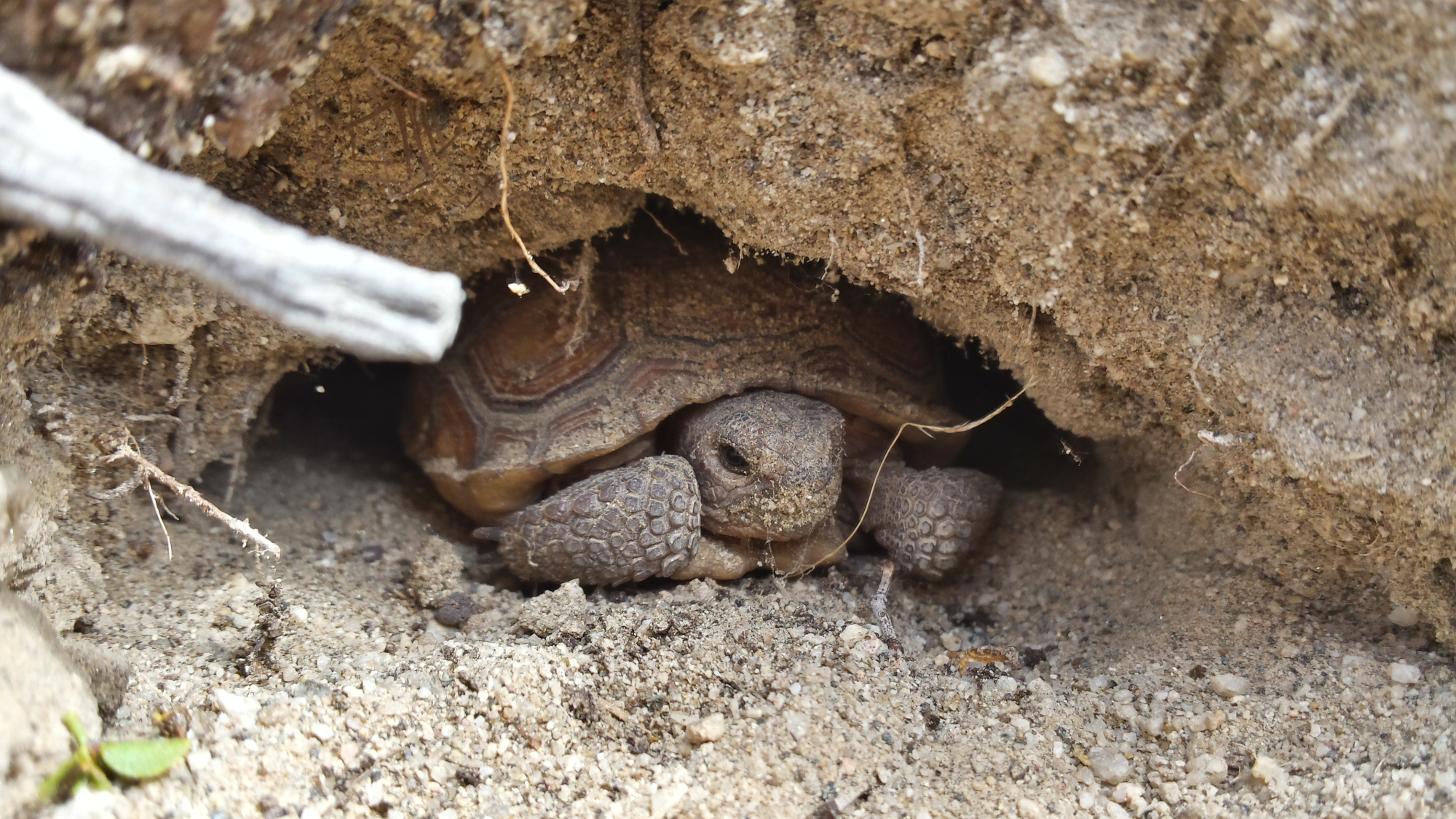Letter from the Director
Electricity generated from solar energy has the potential to help meet the energy needs of Nevada and the nation. However, there are environmental costs associated with developing this renewable energy source in the state’s fragile deserts. This newsletter highlights how research by NEXUS scientists and students increases our understanding of the environmental impacts of solar plant development, and how photovoltaic arrays change the hydrology of water-limited desert soils. Highlighted NEXUS research also investigates techniques for restoring desert soils, vegetation, and biological soil crusts, all of which play an important role in desert ecosystems.
Sincerely,
Dr. Gayle Dana
|
RESEARCH HIGHLIGHTS
|
Ecological Restoration of Desert Ecosystems
Construction and deployment of solar power facilities can destroy the land cover and topsoil, hailing dustier conditions, increased fire risk due to non-native plants providing fuel and habitat loss for native desert species. NEXUS scientist Dr. Scott Abella at the University of Nevada, Las Vegas, and his team, attempt to address this damage to the ecosystem using a three-pronged approach. First the scientists work to restore disturbed areas back to their previous condition by getting native plants back on the land as quickly as possible and stabilizing the soil. In addition, the team has developed techniques to extract the lichens, mosses and microorganisms in the soil’s crust and are investigating how to cultivate and mass produce these vital organisms in the laboratory, with the goal of producing slurry that could be sprayed over large areas. Finally, the team is working to improve the condition and resilience of protected areas, which they hope will become examples of healthy desert ecosystems to partly compensate for habitat losses from renewable energy development. “Restoration in deserts with low and unpredictable amounts of rain is challenging,” Abella says. “But when effective techniques have been developed and properly implemented, restoration can be quite successful in deserts for reducing dust and providing habitat for wildlife.”
Investigating the Preservation of Biological Soil Crusts
Biological soil crusts play an important role in desert ecosystems by stabilizing soils against erosion and providing nutrients to plants. But solar farm installations and maintenance activities can damage these fragile structures and result in increased dust emission. Once destroyed, they take decades to recover. It has been suggested that the speed of recovery could be helped by harvesting the crusts prior to construction, preserved and then used afterward to inoculate the soil. For this strategy to be effective, however, it is necessary to know if the organisms (cyanobacteria, lichens) weaken during storage, how long they can survive, and how to help them thrive once they’ve been re-introduced to the harsh desert environment. To evaluate this strategy, NEXUS scientist Dr. Henry Sun at the Desert Research Institute and his graduate student Lynda Burns evaluated the resilience of biological crust samples in the laboratory. They found that the organisms gradually lose vigor over time due to oxidation, but remained viable for up to three years. “The research suggests that the proposed crust restoration strategy is feasible and should be considered by land managers and solar companies,” Sun says.
Impacts of Solar Arrays on the Local Hydrology of a Water-Limited, Desert Environment
Large photovoltaic (PV) solar arrays used in solar energy facilities block rainwater from reaching some areas of the soil, while concentrating water drainage into specific “drip lines.” The resulting changes in soil moisture distribution affect the facilities’ potential as habitats for native plants and animals. To investigate the impact of solar arrays on soil moisture, NEXUS scientist Dr. Markus Berli at the Desert Research Institute and his team have developed a computer model that indicates rainwater from a single storm infiltrates up to twice as deep under drip lines compared to the areas between the PV panels and therefore is more likely to stay in the soil rather than to be lost to the atmosphere by evaporation. The team plans on expanding their model to investigate the variation in infiltration due to different storm events and in a variety of soil and atmospheric conditions. “To be considered green, solar energy should be generated with minimal impact on the environment,” Berli says. “This research addresses the impact of utility-scale solar energy generation on the local hydrology of a water-limited, desert environment.”
|
GRADUATE STUDENT FOCUS
|
Exploring Desert Recovery
Understanding how deserts react to disturbances such as solar power construction proves crucial to researchers trying to restore the landscape to a healthy form. To investigate desert recovery, graduate student Dominic Gentilcore at the University of Nevada, Las Vegas is monitoring 282 plots at 33 different fire sites in the Mojave Desert, where creosote bush and blackbrush burned between 1980 and 2007. The study’s findings are anticipated to uniquely increase knowledge of how desert ecosystems respond to disturbance, providing useful information when planning ecological restoration on a variety of disturbances including those associated with renewable energy development. “It will be one of the best examples of long-term disturbance response and successional patterns for vegetation at landscape scales within the Mojave Desert,” Gentilcore says.
|
NEXUS AT A GLANCE
|
Take NEXUS 101 – Click Here
|
NEXUS 101
|
How Could NEXUS Research Help Protect the Desert Tortoise?
Solar energy facilities can take up vast amounts of acreage in the desert and, as such, may be reducing the habitat available to natives such as the Desert Tortoise. Also, roads and construction can fragment the land and this Nevada state species might find it difficult to navigate such obstacles to move to new habitats. To mitigate these impacts NEXUS researchers are focusing on improving the health of remaining, undeveloped desert areas to provide the best possible environment for the tortoises’ survival and, whenever possible, working with energy providers to minimize the damage to the ecosystem.
Any opinions, findings, and conclusions or recommendations expressed in this material are those of the author(s) and do not necessarily reflect the views of the National Science Foundation.
If you would like to know more about the NEXUS project, please contact,
Dr. Gayle Dana
Gayle.Dana@dri.edu
530-414-3170

